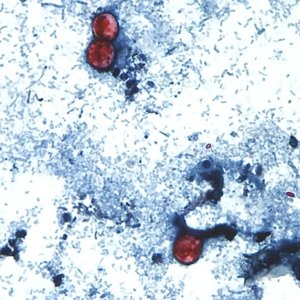FDA is Tracking 2 Cyclospora Outbreaks
Investigators from the U.S. Food and Drug Administration (FDA) are working to determine the source of two Cyclospora outbreaks. One of them has sickened 20 people, the other one includes 28 patients. State health departments in Alabama, Colorado, Georgia, and Texas have reported a surge in cases of cyclosporiasis, the infection caused by the parasite Cyclospora. It is not yet known if those cases are part of these outbreaks.
Outbreaks often involve restaurants. In 2018, salads served at McDonald’s were linked to a Cyclospora outbreak that sickened 511 people in 16 states. And in 2013, a 25-state outbreak sickened 631 people including customers at Olive Garden and Red Lobster restaurants. Currently, Cyclospora is the suspected source of an outbreak that may include customers of Gnar Tacos in Ridgway, CO, and City Market in Montrose, CO.
Related
- Cyclospora from Restaurant Food Drives Summer Case Total to 1,696
- Cyclospora Lawsuits: Iowa and Nebraska Cases Linked to Olive Garden and Red Lobster
- Texas Cyclospora Outbreak Linked to Restaurants and Grocery Stores
- First Iowa McDonald’s Cyclospora Lawsuit Filed by Pritzker Hageman Attorneys
- Marketside Salad Served at ND Restaurant Sickens 6 with Cyclospora
- Taste Restaurant Cyclospora Outbreak Sickens 8 in South Haven Michigan
What is Cyclospora?
Cyclospora is a parasite native to tropical climates and humans are the only known reservoirs. People get these infections when they consume food or water contaminated with human feces containing the parasite.
In the U.S. and Canada, non-travel-related cases are frequently linked to imported produce. Previous Cyclospora outbreaks have been linked to cilantro, basil, salad greens, vegetables, and berries.
Symptoms of a Cyclospora infection include diarrhea that is often described as explosive and watery, nausea, abdominal cramps, bloating, loss of appetite, weight loss, and fatigue. These symptoms can appear within 1 to 14 days of exposure.
Without treatment, symptoms of a Cyclospora infection can last for months. Cyclosporiasis is usually treated with the antibiotic combination Trimethoprim/sulfamethoxazole, sold under the brand names Bactrim, Septra, and Cotrim.

